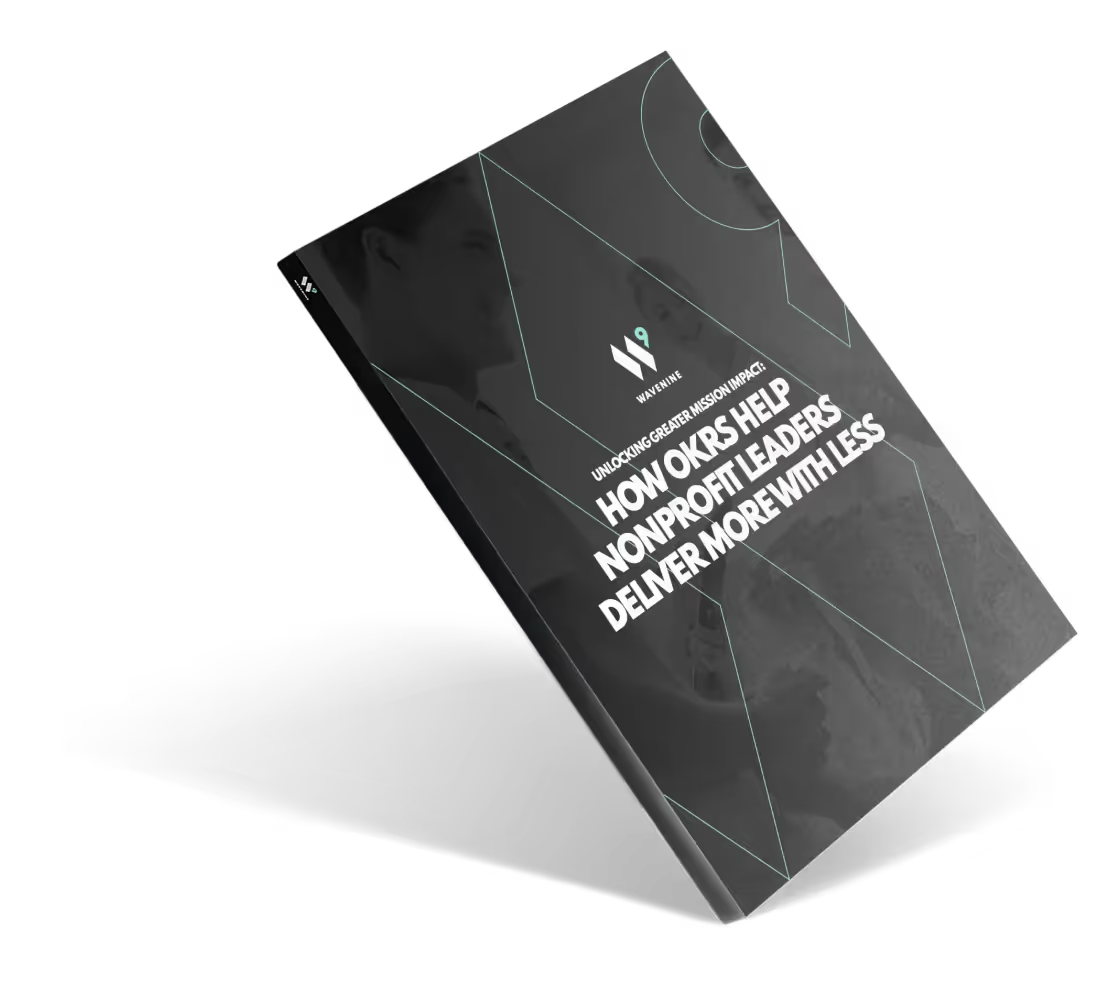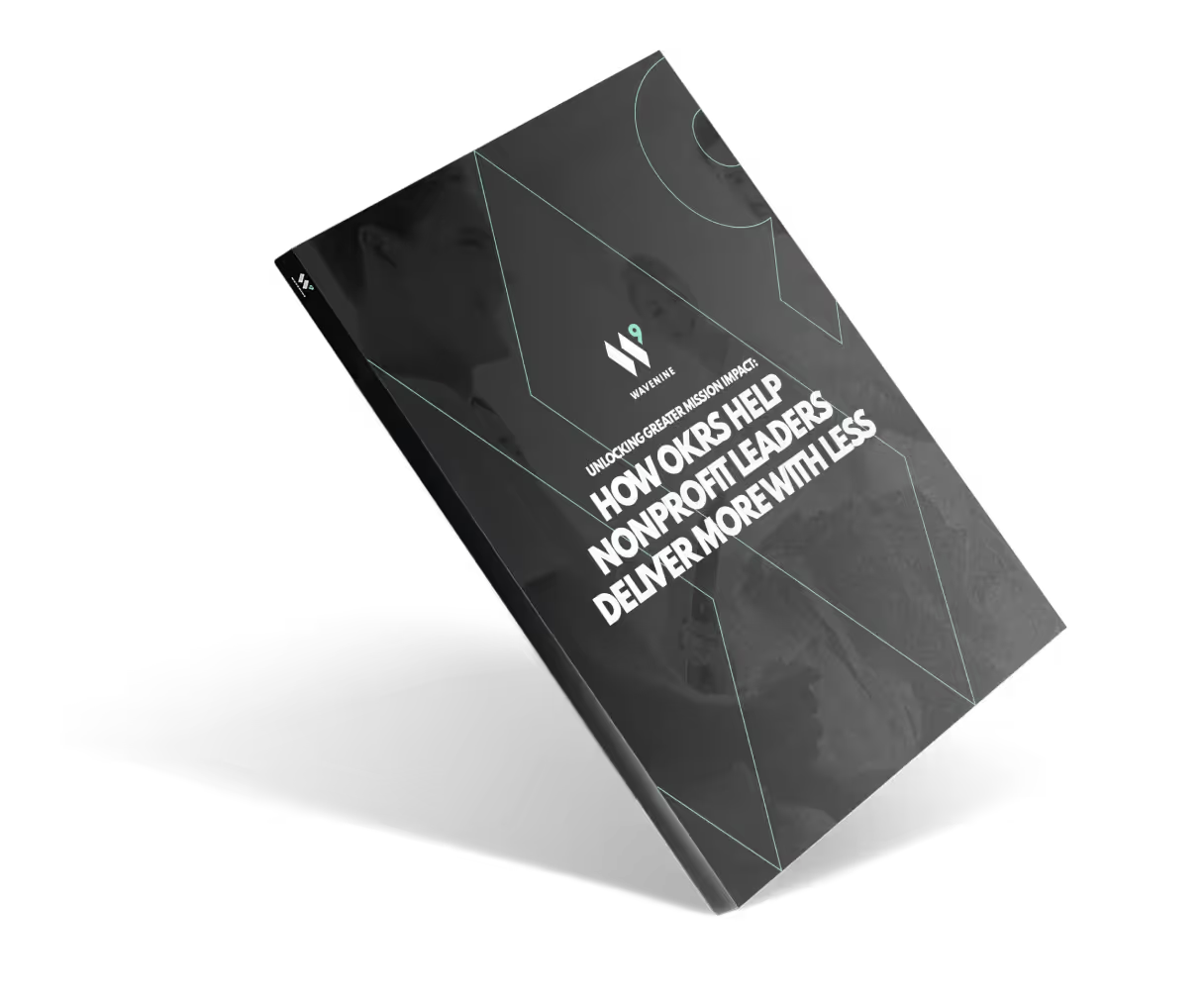The $2.5 Trillion Strategy Execution Gap
Every year, organizations worldwide invest trillions in strategic planning, yet 80% of strategic initiatives fail to deliver measurable business impact. The challenge isn't creating brilliant strategies—it's executing them effectively across the entire organization.
OKRs (Objectives and Key Results) have emerged as the gold standard for bridging this strategy-execution gap. From Intel and Google to Ford and Boeing, the world's most successful companies rely on the OKR framework to transform ambitious goals into measurable outcomes.
For the first time in years, companies can connect what their CEO announces to what teams actually deliver.
OKR Definition: What Are Objectives and Key Results?
OKR stands for Objectives and Key Results—a goal setting framework that helps organizations align teams around strategic priorities while maintaining focus on measurable results.
The Anatomy of OKRs
Objectives are qualitative, inspirational statements that describe what you want to achieve. They should be:
- Meaningful and motivational
- Time-bound (typically quarterly)
- Aligned with organizational priorities
- Achievable yet ambitious
Key Results are quantitative, measurable outcomes that indicate progress toward the objective. Effective key results are:
- Specific and measurable
- Based on outcomes, not activities
- Limited to 3-5 per objective
- Challenging but achievable
OKR Examples in Practice
Company-Level OKR Example:
- Objective: Become the market leader in sustainable packaging
- Key Result 1: Increase market share from 15% to 25%
- Key Result 2: Achieve 90% customer satisfaction rating
- Key Result 3: Reduce carbon footprint by 40%
Team OKRs Example:
- Objective: Deliver exceptional customer support experience
- Key Result 1: Maintain 95% customer satisfaction score
- Key Result 2: Reduce average response time to under 2 hours
- Key Result 3: Increase first-contact resolution rate to 85%
The OKR Methodology: How the Framework Works
The OKR methodology operates on a proven cycle that connects strategy to execution through systematic planning, tracking, and review processes.
The OKR Cycle
1. Planning Phase (Weeks 1-2)
- Set ambitious objectives aligned with company strategy
- Define measurable key results for each objective
- Ensure alignment across all organizational levels
2. Execution Phase (Weeks 3-11)
- Track progress weekly through regular check-ins
- Adjust tactics while maintaining focus on desired outcomes
- Maintain transparency through shared progress updates
3. Review Phase (Week 12)
- Score OKRs based on achievement levels
- Conduct retrospectives to identify lessons learned
- Plan next quarter's objectives based on insights
Quarterly vs Annual Planning
Unlike traditional annual goal setting, quarterly OKRs provide:
- Faster adaptation to changing market conditions
- Improved focus on short-term priorities
- Enhanced agility in strategic execution
- Better alignment between strategy and daily work
Companies like Intel achieve measurable results in 1-4 weeks using quarterly OKR cycles.
Why OKRs Work: Key Benefits for Organizations
1. Improved Focus and Clarity
The OKR framework eliminates the confusion of "too many OKRs" by limiting focus to 3-5 key objectives per quarter. This constraint forces organizations to identify their most critical strategic priorities.
Research shows: Teams using OKRs are 3x more likely to achieve their goals compared to traditional goal setting methods.
2. Enhanced Employee Engagement
When team members understand how their individual OKRs connect to company objectives, engagement increases dramatically. The collaborative process of creating OKRs ensures everyone contributes to organizational success.
"Finally, every team member can see their direct impact on company success."
3. Better Strategy Execution
OKRs bridge the gap between boardroom strategy and frontline execution by:
- Translating high-level strategy into specific, measurable goals
- Creating alignment across distributed teams
- Enabling real-time visibility into progress
- Facilitating data-driven decision making
4. Measurable Outcomes and Progress Tracking
The emphasis on measurable key results transforms organizations from activity-focused to outcome-driven. Key stakeholders can track progress in real-time and make informed adjustments.
Creating Effective OKRs: Best Practices and Examples
Writing Strong Objectives
Good objectives are:
- Aspirational: Push teams beyond their comfort zone
- Aligned: Connected to organizational priorities
- Actionable: Clear about what needs to be accomplished
- Time-bound: Specific to a quarterly cycle
Example of Strong Objective: "Establish market leadership in the enterprise software segment"
Defining Measurable Key Results
Effective key results:
- Focus on outcomes, not activities
- Include specific metrics and targets
- Are achievable yet challenging
- Provide clear success criteria
Example of Strong Key Results:
- Increase enterprise customer base from 50 to 75 clients
- Achieve $5M in quarterly revenue from enterprise segment
- Maintain 95% customer retention rate
Common OKR Mistakes to Avoid
1. Too Many OKRs
- Limit to 3-5 objectives per quarter
- Focus on what matters most
- Avoid diluting attention across too many priorities
2. Unmeasurable Key Results
- Avoid vague language like "improve" or "enhance"
- Include specific metrics and targets
- Ensure results can be objectively measured
3. Activity-Based Key Results
- Focus on outcomes, not tasks
- Ask "What impact will this create?" not "What will we do?"
- Measure results, not effort
4. Lack of Alignment
- Ensure team OKRs support company objectives
- Create clear connections between levels
- Regularly review alignment during check-ins
Implementing OKRs: A Strategic Approach
Phase 1: Foundation Building
Organizational Assessment
- Evaluate current goal setting practices
- Identify key stakeholders and champions
- Assess readiness for change
Leadership Alignment
- Secure executive commitment
- Define success metrics for the OKR program
- Establish governance structure
Phase 2: Pilot Implementation
Start Small
- Begin with 1-2 teams or departments
- Test the OKR process over one quarter
- Gather feedback and refine approach
Training and Support
- Provide comprehensive OKR training
- Establish coaching support
- Create templates and resources
Phase 3: Organization-Wide Rollout
Scaling Strategy
- Expand to additional teams gradually
- Maintain consistency in methodology
- Monitor adoption and engagement
Technology Integration
- Implement OKR software for tracking
- Ensure integration with existing systems
- Provide user training and support
OKR Software and Tools: Choosing the Right Platform
Key Features to Consider
Essential Capabilities:
- Real-time progress tracking
- Alignment visualization
- Collaboration features
- Reporting and analytics
- Integration capabilities
Advanced Features:
- Automated check-ins
- Goal cascading
- Performance analytics
- Mobile accessibility
- Custom dashboards
Key Features to Consider
Companies like Intel, Ford, and Boeing rely on enterprise-grade OKR platforms that provide:
- Scalability across thousands of employees
- Security for sensitive strategic information
- Integration with existing business systems
- Support for complex organizational structures
Measuring Success: Tracking Progress and Scoring OKRs
Leading vs Lagging Indicators
Leading Indicators:
- Predictive metrics that influence outcomes
- Early warning signals for course correction
- Actionable insights for improvement
Lagging Indicators:
- Historical measures of past performance
- Confirmation of results achieved
- Validation of strategic success
OKR Scoring Methodologies
Traditional Scoring (0.0 - 1.0 Scale):
- 0.0 - 0.3: Significant shortfall
- 0.4 - 0.6: Progress made but missed target
- 0.7 - 1.0: Delivered on expectation
Binary Scoring (Yes/No):
- Simplifies evaluation process
- Reduces scoring debates
- Focuses on clear achievement
Continuous Improvement
Regular Reviews:
- Weekly check-ins for progress updates
- Monthly deep dives for strategic adjustments
- Quarterly retrospectives for learning
Feedback Loops:
- Gather input from team members
- Identify process improvements
- Refine OKR methodology
Advanced OKR Strategies for Modern Organizations
Managing Distributed Teams
Remote Work Considerations:
- Increased emphasis on written communication
- Regular virtual check-ins and reviews
- Digital collaboration tools
- Clear documentation practices
Best Practices:
- Maintain consistent meeting cadence
- Use video for important discussions
- Create shared visibility dashboards
- Establish clear communication protocols
Scaling Across Large Organizations
Organizational Alignment:
- Cascade strategy from company to individual level
- Ensure horizontal alignment between departments
- Maintain vertical alignment across management levels
- Create cross-functional OKRs for shared priorities
Change Management:
- Comprehensive training programs
- Internal champion networks
- Regular communication and updates
- Celebration of wins and learning from failures
Integration with Performance Management
Performance Reviews:
- Align individual performance with OKR achievement
- Focus on contribution to team and company success
- Emphasize learning and growth
- Separate OKR scoring from compensation decisions
Career Development:
- Use OKRs to identify skill gaps
- Create development opportunities
- Align personal growth with organizational needs
- Support aspirational goal setting
The Future of OKRs: Emerging Trends and Innovations
AI and Machine Learning Integration
Predictive Analytics:
- Forecast OKR achievement probability
- Identify at-risk objectives early
- Recommend corrective actions
- Optimize resource allocation
Automated Insights:
- Pattern recognition in goal achievement
- Personalized coaching recommendations
- Intelligent goal suggestions
- Real-time performance alerts
Agile OKR Methodologies
Shorter Cycles:
- Monthly or bi-weekly OKR sprints
- Rapid experimentation and learning
- Faster adaptation to market changes
- Increased organizational agility
Continuous Planning:
- Rolling quarterly planning
- Dynamic goal adjustment
- Real-time priority shifts
- Flexible resource allocation
Your Path to OKR Success: Implementation Excellence
Why Implementation Matters More Than Framework
"OKRs don't fail; implementations do."
The OKR framework is proven across thousands of organizations, but success depends on thoughtful implementation that considers:
- Organizational culture and readiness for change
- Leadership commitment and active participation
- Training and support for effective adoption
- Technology infrastructure to enable tracking and collaboration
- Change management to overcome resistance and build momentum
The Wave Nine Advantage
250+ implementations have taught us that successful OKR adoption requires:
1. Customized Approach
- Tailored to your organization's unique culture
- Aligned with existing processes and systems
- Designed for sustainable long-term success
2. Embedded Coaching
- Side-by-side implementation support
- Skill transfer to internal champions
- Ongoing guidance and optimization
3. Proven Methodology
- Battle-tested across 30+ countries
- Refined through real-world enterprise experience
- Focused on measurable business results
4. Enterprise-Grade Technology
- Trusted by Intel, Ford, and Boeing
- Scalable across thousands of employees
- Integrated with existing business systems
Ready to Transform Your Strategy Execution?
Board meetings where strategic progress means more than task completion.
The same systematic approach that helps companies like Intel, Ford, and Boeing connect boardroom strategy to frontline execution—in weeks, not months.
Your Next Steps:
1. Schedule a Strategic Consultation to assess your organization's readiness
2. Download our OKR Implementation Guide for detailed methodology
3. Explore our Enterprise Success Stories to see results from companies like yours
Finally, bridge boardroom strategy to frontline execution with our proven approach to OKRs.


































































































































